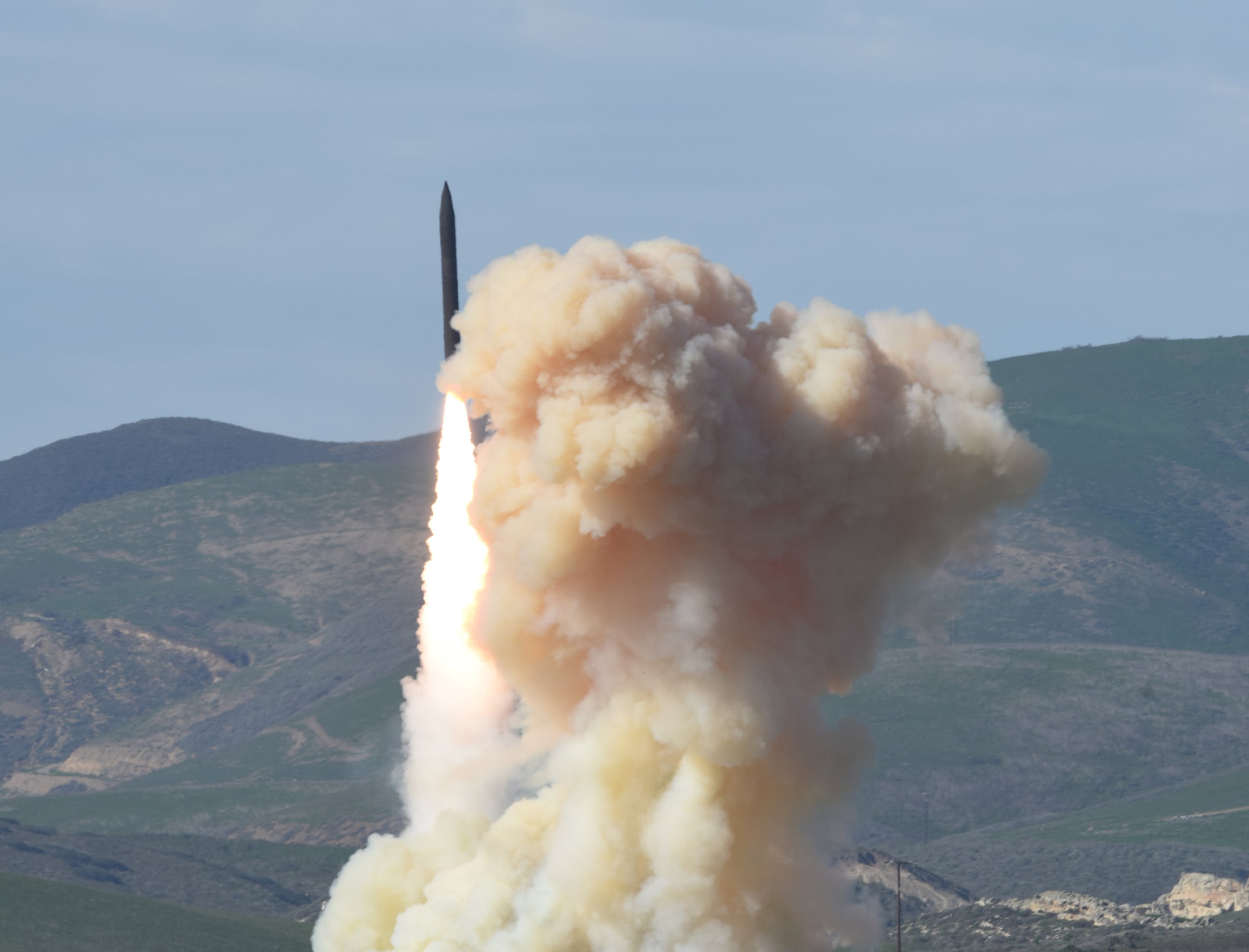HUNTSVILLE, Alabama — To address the Russian and Chinese threats to the United States, as laid out in the National Defense Strategy, a focus on missile defense sensors is an absolute must, U.S. Strategic Command chief Gen. John Hyten hammered home during an Aug. 7 speech at the Space and Missile Defense Symposium.
“The most important thing to do in the missile defense business is making sure you can see and characterize the threat,” Hyten said. “If you can’t see and characterize the threat, I don’t care what kind of shooter you have — there is nothing you can do about it. So the most important thing is — you look at all the threats that are coming together, hypersonics, etc. — is that we have to be able to see that threat.”
The United States invested heavily in the past year to drastically increase its ground-based interceptor numbers to its Ground-based Midcourse Defense system in Alaska and California that is designed to defend against possible ballistic missile attacks from North Korea and Iran.
RELATED

But for Hyten, that is just the “catcher’s mitt” when it comes to missile defense, and “it’s a very expensive proposition for the United States” to only focus on defensive capabilities.
The United States also needs to focus offensively, and that means turning to a robust sensor layer to see threats early in order to defeat them either in the boost phase of flight or “left of launch,” the term for defeating a missile threat before it even has time to leave its launcher, according to Hyten.
“If you can see it early, you can kill it early,” Hyten said. “Driving that equation to the left has huge operational advantages because to actually shoot down a missile that somebody launched that comes back down on their head, do you think they are going to shoot another one? I don’t think so. They are not going to shoot another one because it’s just going to come right back down on their head and so they stop shooting. Isn’t that the whole point?”
To really get after capable sensors that can detect missile threats early, whether they are ballistic or cruise missiles or hypersonics, those sensors can’t be focused terrestrially, Hyten said.
RELATED

“There is not enough islands in the worlds to build radars on to see all the threats and be able to characterize the threats,” Hyten said. “ You just can’t get there from here, so the only place to go and do that is a place where the U.S. is actually strongest and technology is there to do it, and that is into space. We have to go into space.”
Congress has heard Hyten’s call and is pushing a space-based missile defense sensor layer in its fiscal 2019 National Defense Authorization Act and in appropriations bills. Lawmakers are also pushing for intercept capability from space, which does not yet seem to be a major focus of the Missile Defense Agency or U.S. Strategic Command.
The capability to put together a space-based missile defense sensor layer isn’t an impractical idea rooted in science fiction, but rather already manifested through well-developed technology on the commercial side.
That technology is becoming available that could easily enable the creation of a space-based sensor layer now in an affordable way, according to Hyten.
While the Missile Defense Review is delayed, with no public announcements on the hold up or projections on its release, the emphasis of space-based sensors, both in Congress and by missile defense leadership within the Pentagon, could be evidence that space will play an important role in a forthcoming missile defense strategy despite the lack of unclassified efforts funded in the FY19 budget request.
Hyten mentioned during his speech that he wished it would be possible to downgrade the classification levels of some of the ongoing efforts in space in order to have a more public conversation on capability.
The Missile Defense Agency has initiated studies on a space-based tracking system, having awarded nine contracts to study such a capability.
Lockheed Martin’s Sarah Reeves, vice president of missile defense within the company’s space business unit, told reporters Aug. 7 at the symposium that the company was on the front end of defining what the space-based sensor layer could look like.
Lockheed alone has spent $100 million in internal funding and years of thinking about and developing what the core technologies associated with the layer might be, what the orbits might look like, where the sensors would fly and possible platform designs.
Reeves added there are “very mature technologies within Lockheed,” and she said the company hopes to leverage those and spiral advanced technologies in as the timeline goes on. “The space-based layer is near term and will be very relevant to how we shape the future of missile defense,” she said.
Jen Judson is an award-winning journalist covering land warfare for Defense News. She has also worked for Politico and Inside Defense. She holds a Master of Science degree in journalism from Boston University and a Bachelor of Arts degree from Kenyon College.







